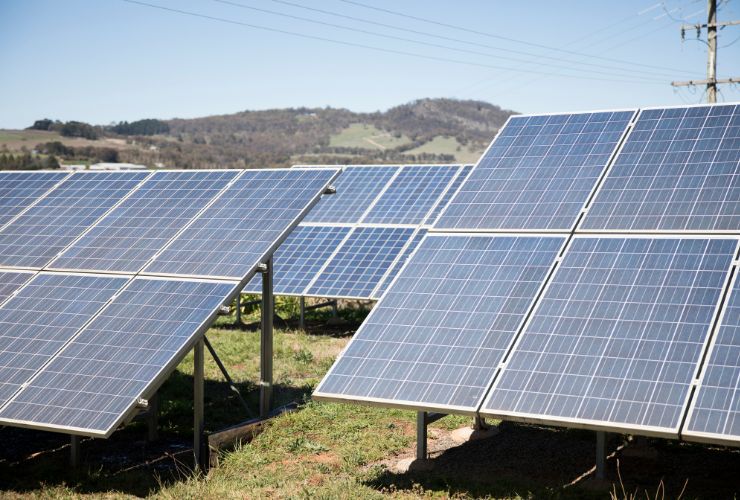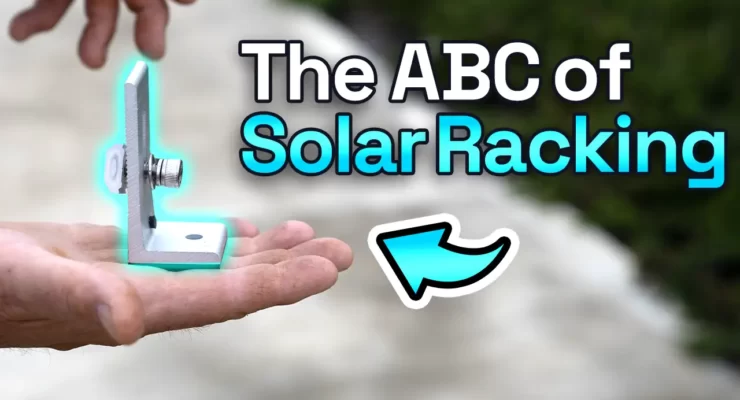Fast read
For pitched roofs, the mounting system involves roof hooks, flashings, rails, and clamps, providing a secure foundation for the solar panels.
On flat roofs, ballasted mounting methods are commonly used, and tilted racking systems can be employed to increase solar generation capacity. Tilted panels facing north or at an angle equivalent to the latitude of the location can optimise annual generation, resulting in approximately 15% more electricity production compared to flat installations.
Tilting the panels also allows for efficient rainwater runoff, reducing the accumulation of surface dust and minimising maintenance requirements. Complying with the minimum allowable tilt requirement ensures efficient operation and adherence to warranty guidelines, making tilt framing essential for the proper functioning of solar systems.
What solar mounting system you should get?
While solar panels can be installed flat on a flat roof using standard mounting, there is also the option to have the panels installed on tilt framing. This method allows the panels to be tilted upwards to better face the sun.
This alignment with the sun’s trajectory not only improves the amount of sunlight received. It also optimises the angle of incidence which plays a pivotal role in the energy efficiency of the panels. The question then arises How does my roof pitch affect my solar production?
Before we move to flat roofs – what happens on pitched roofs for solar panel mounting?
For standard pitched roofs, panels are mounted on rails fixed to brackets fixed to roof screws on colour bond and tin roofs. On tile roofs, the brackets screw to the timber rafters or battens underneath the tiles.
The intricate details of these brackets and fixings matter significantly. Ensuring they are robust and durable can prevent possible complications in the future because of weather conditions. Particularly in Australia, where summer heat and sporadic storms can take a toll on poorly installed systems.
- Tile brackets, also known as roof hooks are most typically found on pitched roofs with tiles. They are attached to the roof rafters and serve as a secure foundation for the solar panel rails, on which the panels get fastened.
- Rails get installed onto the tile bracket and serve as a roof structure for attaching the solar panels. They are typically made of aluminium and are usually cut on-site to fit multiple panel arrangements.
What about pitched roofs and metal sheeting?
Given Australia’s geographical location, understanding and adapting to the sun’s movement throughout the year can make a substantial difference in the amount of solar energy converted.
If the roof surface on a pitched roof is metal sheeting e.g. Colourbond then the brackets are different and usually shaped like an L and get attached to the roof screws that fasten the colorbond sheeting. This is then followed by the rail and clamp fastening like on a tile roof. Cliplock metal roofs have a different bracket again, but all other aspects are the same.
What about a flat roof pitch?
- Ballasted mounting methods were in the past used on flat rooftops, with concrete roofs, where drilling into the concrete might have caused water penetration issues, over time. In such a set up the weight of the solar array is supported by ballast or weight blocks. This eliminates the need for roof penetrations and makes installation and maintenance simple.
- Flat roofs can benefit from tilted racking systems to maximise solar effectiveness. These devices raise the solar panels to gather more sunlight at an appropriate angle. They are usually made of metal frames that support the panels and can be adjusted to the proper tilt angle.
- Because flat roofs are more vulnerable to wind forces, the solar panel mounting system in case of a tile frame will need more brackets.

Why are tilt solutions nowadays less common on a flat roof pitch?
For flat roofs, if one uses standard rails and brackets the result will be that the panels are flat to the roof surface. Flat roofs have a minimal angle of 3 or 5 degrees, therefore this will be the angle at which the panels sit. To get more output and have panels face the sun more directly, especially in winter, one would need to get specific solar panel tilt mounting framing. Usually with a short leg on the bottom and a longer leg at the back of the panel.
The final design of these will depend on the roof surface that the panels are being installed on. This is an important consideration, especially for homeowners who might be thinking about future roof maintenance or renovations. Any structural changes to the roof could potentially impact the solar installation, and knowing the advantages and drawbacks of each system is pivotal.
And then there are the shadows
Throwing strong shadows on panels day in and day out can cause damage to the bypass diodes in the panels and over time the panels themselves. This will then also potentially void the product and output warranty. The panels will not have been installed in line with the manufacturer’s instructions (to avoid shadows on the panels).
In Australia, where the sun’s trajectory changes notably between summer and winter, understanding the dynamics of shading becomes even more pivotal. Shadows not only reduce the amount of sunlight captured but can also lead to uneven temperature distributions on the panel.
When installing solar panels, various factors play a crucial role in determining the efficiency and output of the system. One of these is the spacing between panels.

Advantages and disadvantages of a flat-on-roof solar panel mounting
Flat installations come with their set of advantages and limitations. These setups, designed with pathways for future maintenance, can yield impressive results in summer when the sun is directly overhead. However, during winter, with the sun at a lower angle, the panels don’t receive sunlight as efficiently.
In contrast, a tilted installation enhances winter outputs, with an increase ranging from 10 to 20%. The principle behind this is straightforward: the more direct sunlight falls on a solar panel, the greater its energy absorption. For a location like Australia, the ideal orientation to maximise annual solar generation is north-facing panels.
Solar panels should ideally be tilted at an angle matching the latitude of their installation site. For instance, a standard 22° pitch roof in Australia is nearly optimal in many parts of the country.



